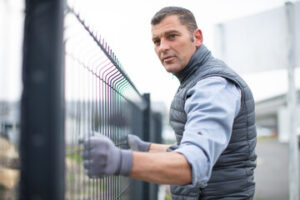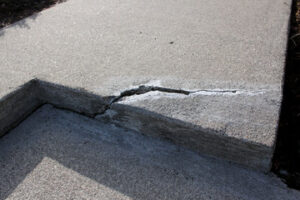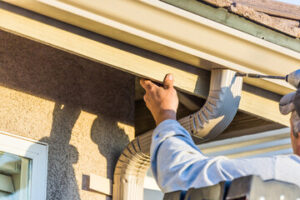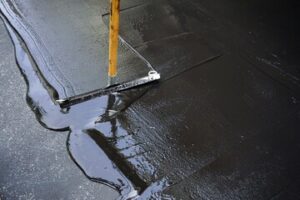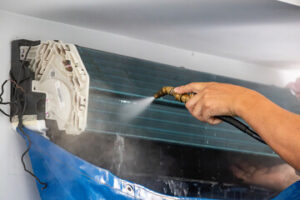Concrete Leveling Dallas is a repair process that lifts and stabilizes uneven concrete slabs. It is less expensive than having a new concrete slab poured and can be done quickly.
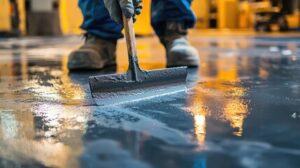
Uneven concrete can be dangerous to walk on, especially for elderly and handicapped people. Fortunately, there are several ways to fix it. A traditional approach is mudjacking, which involves pumping a mixture of soil and cement underneath damaged concrete to lift it up. The more modern alternative is polyjacking.
Concrete is an extremely durable material used to build everything from homes and driveways to office buildings and parking lots. But it’s not indestructible and, over time, concrete can sink and become uneven. Concrete leveling can correct this issue and restore concrete to its original position. The cost of this service, however, varies depending on the method employed and the severity of damage to the slab. In order to accurately budget for concrete leveling, property owners should contact a concrete repair specialist to receive a free inspection and quote.
The most common method of concrete leveling is mudjacking, which involves pumping a mixture of water, soil, sand, and cement beneath the sunken slab. This injected material hydraulically lifts the slab, addresses voids, and stabilizes the surface. Mudjacking is a reliable option for moderate to severe concrete settlement issues and is relatively affordable.
Another popular method of concrete leveling is foam concrete lifting, which utilizes a high-density polyurethane spray that fills and raises the concrete. This solution is quick and minimally invasive, reducing the risk of further soil compression and the need for extensive downtime. It’s also lightweight and provides more stability than concrete replacement, making it an ideal choice for a wide variety of applications.
Grout leveling is a more traditional approach that uses Portland cement and grout to fill and stabilize the concrete. This solution is typically less costly than mudjacking, but it also offers a lower level of strength. Foam leveling, on the other hand, is more expensive than the other two methods but offers superior durability and stability.
It’s important to choose a quality contractor that can offer accurate quotes and a reasonable warranty for concrete leveling services. Additionally, it’s wise to consider a concrete maintenance program that will optimize the lifespan and performance of your concrete surfaces. Regular inspections, prompt repairs, and proper drainage management can help prevent future issues like erosion and sinking. This can dramatically cut down on repair costs and extend the life of your concrete surfaces.
Time
Concrete is a strong and durable material that’s used almost everywhere in our homes, businesses, and public spaces. But, despite its reputation for strength, concrete isn’t invincible. Several factors can cause it to sink or become uneven, including moisture and soil compaction.
Uneven or sinking concrete can be a huge hassle, but catching and repairing it early can save you time and money. Concrete leveling is a sophisticated repair method that elevates and levels sunken concrete surfaces. It can also be a safer alternative to replacing the concrete.
However, if you’re thinking about hiring a concrete leveling company to repair your property’s concrete surface, there are some important things you should consider. The first is the level of experience that the company has. An experienced team of professionals will be better equipped to handle the unique challenges that can arise during the concrete leveling process. They’ll also be able to provide you with a more accurate price estimate.
Another consideration is how long the concrete leveling process will take. Some techniques, like mudjacking and polyurethane injections, require less time than others. However, these methods may not provide as long-lasting results. This is because they don’t completely fill the voids under the concrete.
For example, mudjacking involves pumping a slurry mixture beneath damaged concrete to lift it. This slurry is created with materials like cement, sand, and clay. But, because it’s so water-heavy, it often washes away over time, leaving voids underneath the concrete.
Similarly, foam concrete leveling uses expanding foam to raise sunken concrete. But, the foam is susceptible to temperature changes and can break down over time. In addition, foam doesn’t fully fill the voids under the concrete, so it can lead to a shorter lifespan than other concrete leveling methods.
In contrast, the PolyRenewal concrete leveling method is more durable than these other methods. It can be installed in one day, through smaller penny-sized holes drilled into the concrete. It’s also environmentally friendly and made with recycled materials. Additionally, it doesn’t need extended periods of curing as other concrete repair techniques do.
Method
Concrete leveling is a repair solution that lifts sunken or uneven concrete slabs and restores them to an even position. It is a safe and effective option for residential and commercial properties. The process can be completed in a few hours and is less disruptive than replacing concrete. However, it is important to understand the risks involved and how this technique compares to other options for addressing sinking concrete.
The concrete leveling process involves drilling small holes into the surface of the slab and injecting a special compound to lift it. This is done without damaging the surface of the concrete or surrounding landscaping. It is a great alternative to traditional methods of raising concrete, such as mudjacking or replacement. It is also much cheaper and longer-lasting.
In addition to the time and cost benefits, this method is environmentally friendly. It requires minimal disruption to the surrounding area, and the polyurethane foam is resistant to water, preventing future erosion and settlement. It can be used to raise driveways, sidewalks, patios, and pool decks.
Uneven concrete can detract from the aesthetics of your property and create tripping hazards. It can also affect the value of your home, and it is important to take steps to fix it before it gets out of hand. Fortunately, concrete leveling can be completed quickly and effectively to improve the safety and appearance of your property.
Mudjacking is an alternative to concrete leveling that involves pumping a slurry mixture underneath damaged concrete to lift it. The slurry mixture looks and acts like mud, which gives it its name. This method is less expensive than concrete leveling, but it is not as durable and does not last as long as polyurethane foam.
Before attempting to do concrete leveling yourself, you should first have the slab inspected by a professional. This step will ensure that there are no major foundation problems that could prevent the repairs from being successful. It is also important to clear the area of furniture and other items before starting the work. A professional can help you assess your foundation, recommend the best repair method for your needs, and provide a cost estimate.
Safety
Concrete leveling is a safe and effective way to repair sunken, uneven concrete surfaces around homes. It fills voids underneath sinking slabs to restore their original position, and it can be used on driveways, sidewalks, patios, porches, pool decks, and other outdoor concrete areas. It is a permanent solution that preserves property value and reduces the risk of future damage. It also eliminates tripping hazards and enhances home safety.
Using the right tools and materials is important to ensure that the concrete leveling process is done properly. It is essential to hire a professional concrete contractor with the proper equipment and knowledge of how to handle the work safely. A concrete leveling expert will assess the site and determine whether it is suitable for the job, including evaluating the ground conditions and drainage patterns. He or she will also recommend the best concrete leveling methods for the area.
A comprehensive project plan is crucial for the success of concrete leveling. It outlines the timeline, scope of work, and safety protocols, and ensures that all objectives are met precisely. It is also a critical component for cost efficiency, as it allows for the inclusion of a buffer to manage unexpected expenses.
Safety measures for concrete leveling include assessing the condition of the concrete surface, removing any obstructions that may interfere with the work, and ensuring that the area is free from frost and other hazardous conditions. It is also vital to test the concrete’s hardness before putting weight on it, and to protect the surface from moisture fluctuations while it is curing.
The benefits of concrete leveling extend well beyond improving the aesthetics of a home’s exterior. It is also an excellent way to improve accessibility and reduce tripping hazards, especially for seniors and people with mobility issues. It is an affordable and long-term solution that improves home functionality and provides a safer living environment for families and pets.
A maintenance plan is necessary to ensure that the results of a concrete leveling project last for years to come. Regular inspections will identify potential wear and tear and allow for timely intervention, while preventative measures such as directing water away from concrete surfaces will minimize moisture infiltration.
